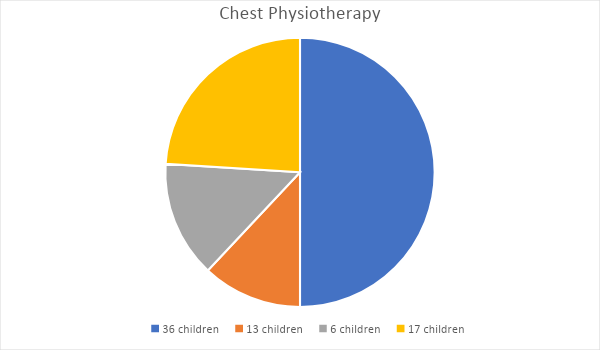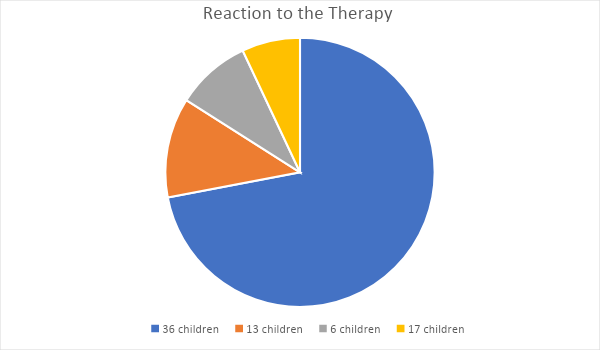Abstract
Cystic Fibrosis (CF) is a gene mutation that aims to impact the digestive and respiratory systems. It is a multisystem syndrome that damages mainly the lungs, but other organs such as the intestine, pancreas, and liver can also impact. The disorder of the disorder can be passed from one generation to another since it is usually hard for anyone to realize their carriers. About 1 in 23 individuals carry the gene factor that causes the disease, resulting in 1 in 2400 children with the disease. The disease is most familiar with people from North America and Europe. Specified to the conditions, it led to new findings, research discoveries, and diagnostic tests. The study’s objective is to research the relationship between cystic Fibrosis and malnourishment and determine the best therapy for cystic Fibrosis. The primary method that facilitates the conduction of the research is collecting data from different individuals who are willing to take part in the study process. The results propose that the condition is not a common disease, but physicians will quickly solve the problem with better advancements in approaching the situation.
Children diagnosed with CF are at a high risk of malnutrition because of the impaired ability of the body to absorb nutrients due to repeated pulmonary exacerbations, increased basal energy necessity, and pancreatic inadequacy hence affecting development (El Basha, 2018). Other neuropsychiatric disorders like CF-related diabetes, CF-related liver disease, and gastro-esophageal reflux disease contribute to insufficient nourishment. The status of a person is determined by anthropometric measures constituting body mass index, height, and weight with the calculations of Z scores from limited typical development. Patients suffering from the disease in developed nations are entitled to a good nutrition diet from organizations, while those from developing countries have challenges accessing significant nourishment (Wilson et al., 2016). Furthermore, the status of nutrition in patients has always been linked to nutritional interventions and respiratory health.
In the United States, children are monitored with essential, cost-effective treatments. However, managing the condition in children has proved challenging because of numerous motives such as the inadequate presence of skilled medics to handle the problem and delay of results because fewer facilities provide the services. There is scarce research on malnutrition to CF, especially in America and Europe, where the condition is still an evolving disease and somewhat unusual. Therefore, the research paper aims to examine the malnutrition rate in children with CF by analyzing methods, results, and discussion of the study.
Methods
The following paper examines the rate of malnutrition in children with CF in America and Europe. The study was conducted in a pediatrician’s clinic between 2010 and 2015 by the National Institute of Health (NIH) (Touré, 2017). The study revealed relevant information from literature sources. To ensure detailed extraction of data, we selected our data by applying robust selection and exclusion criteria. We used the inclusion and eligibility criteria and cross-sectional studies to determine the factors that influence nutritional status in children, with the main focus on Europe and America. Besides, patients with a minimum of four consistent visits per year were also included in the research.
The research focused only on high-quality peer-reviewed papers that were published in international scientific journals. The high-quality journals, in this case, imply those that met the inclusion requirements for this study and comprised a sample size of not less than 50 children under the age of five. Therefore, unpublished information and articles which were not peer-reviewed were excluded. To ensure that we obtained relevant primary data, we excluded reviews and explorative articles that the authors did not document in English; their main focus was not on the factors that influence nutritional status and lack pertinent details for review.
For our search strategy, we looked for articles in the following databases: Google Scholar, Microsoft Academics, Science Direct, PubMed Central, and MDPI for journals. The key terms used to search for information from the selected databases were: malnutrition, over-nutrition, child-nutritional status, stunted, and children under five years. The diagnosis was measured by three irregular sweat chloride evaluations and definitive clinical history. Patients were advised to take meals rich in diet and high levels of calories. There was a follow-up of children’s conditions at an interval of 1 to 4 months. On every checkup, samples were collected and measured by analyzing gastrointestinal and respiratory circumstances (Touré, 2017). The collected data comprised length, height, and weight and were recorded at the initial phase of the examination. The Z scores later determined the certainty of the results. The Z scores were calculated using the World Health Organization standard software that provided a 99.9% accuracy (Touré, 2017).
Results
A study conducted by El Basha (2018) involving 50 participants, 16 of them had bronchiectasis, which CF causes. The condition is a result of malnutrition, poor hygiene, and lack of proper healthcare facilities. Providing counseling of diet intake to the patients also proved to be an efficient strategy for solving the situations besides providing clinical medications (Larson‐Nath & Goday, 2019). Seventy-two children, with an inclusion of 63%, were put into the research. The highest percentage was focused on children who required chest physiotherapy, 36 at 90%, 13 at 2% salty nebulization. Also, six at 3% vitamin supplementations and soluble fats, and 17 at5% azithromycin. None of the children received DNase treatment. The chart shows a summary of the focused group therapy. Individuals who lack access and affordability to a sufficient diet are more likely to be exposed to CF than their counterparts (Poulimeneas et al., 2020).

Furthermore, correlations of the therapy administered gave varying results after the five years of the research to different children who required them.
After issuing a standard balanced diet rich in calories, a different percentage of reaction to the therapy was observed in 72 children showing 72% to the response of the treatment, 12% demonstrating slow response to the medication, 9% illustrating inadequate response, and 7% indicating no symptoms of reacting the drug. The chart below shows the summary of the data (Touré, 2017). CF is still an evolving issue because patients are controlled with limited resources such as proper facilities and a lack of skilled specialists to handle the matter (Phong et al., 2020). The management of the CF requires advanced physiotherapy, frequent nutritional support, and extensive drug therapy (Rafeeq & Murad, 2017). The results from the above studies are crucial to addressing the topic of the paper as each presents the correlation between CF and other conditions such as malnutrition.

According to this research, the papers used to support our focus point are methodologically better than those that oppose the findings since they provide a specific demographic point of analysis. The opposing documents suggest that other researchers collected data too early and present risks of giving false results. However, our support papers encouraged the re-run of the tests hence determined to ensure accuracy of the outcome (Touré, 2017).
Discussion
The evaluation shows that more than half of the children suffered from CF and require the immediate attention of effective therapy. Moreover, we noticed an improvement in the nutritional status after the five years of the examination. Hence the development of malnourished children was due to a lack of CF therapy.
However, the results differed from the study conducted by the Centre for Disease Control (CDC) in the same period. It shows there are still more cases of Cystic Fibrosis in malnourished children because of the early diagnosis that is usually conducted, giving false results (Touré, 2017). From the conducted research, the regular follow-up of the patients established a different opposing outcome since it shows that poor diagnosis results from pulmonary morbidity and underweight. However, aggressive treatment of exacerbations and foundation and energies to enhance nutritional intake in children break the cycle of accuracy in getting results.
The worsening of the diagnosis is because of patients’ ignorance to follow the counseling and prescription of the medications provided. Besides, the strength of the research was limited to the children of America and Europe. Another limitation of the study was the lack of cooperation by some patients. The data analysis shows that it is difficult to contain the disease with no proper strategies since pulmonary disorders were separately associated with the medication and counseling administered to the patients regarding dietary intake. Besides, basic knowledge nourishment is an essential characteristic required in the treatment of malnutrition children.
In conclusion, malnutrition is a joint disorder in children with CF across America and Europe, developing and needs immediate action by the authorities. Poor nutrition has prevailed in both regions due to a lack of proper counseling and access to sufficient knowledge of CF’s impact. The impact of respiratory conditions on CF is significant despite providing positive and negative results. Apart from nutrition and administration of treatment to the children, the government should encourage interventions to enhance affordability, accessibility, and other strategies to help reduce the infection and adequate knowledge on CF.
References
El Basha, N. (2018). Impact of the underlying cause of bronchiectasis on clinical outcome: A comparative study on CF and Non-CF bronchiectasis in Egyptian children. Egyptian Pediatric Association Gazette, 66(2), 49-53. Web.
Larson‐Nath, C., & Goday, P. (2019). Malnutrition in children with chronic disease. Nutrition in Clinical Practice, 34(3), 349-358.
Phong, R. Y., Taylor, S. L., Robinson, B. A., Jhawar, S., & Nandalike, K. (2020). Utility of Mid‐Upper Arm Circumference in Diagnosing Malnutrition in Children with Cystic Fibrosis. Nutrition in Clinical Practice, 35(6), 1094-1100. Web.
Poulimeneas, D., Grammatikopoulou, M. G., Petrocheilou, A., Kaditis, A. G., & Vassilakou, T. (2020). Triage for Malnutrition Risk among Pediatric and Adolescent Outpatients with Cystic Fibrosis, Using a Disease-Specific Tool. Children, 7(12), 269.
Rafeeq, M. M., & Murad, H. A. S. (2017). Cystic Fibrosis: current therapeutic targets and future approaches. Journal of translational medicine, 15(1), 1-9. Web.
Touré, A. (2017). Genetics and pathophysiology of the cystic fibrosis transmembrane conductance regulator in male reproduction: new evidence of a direct effect on the male germline. Genetics of Human Infertility, 21, 74-85. Web.
Wilson, R., Aksamit, T., Aliberti, S., De Soyza, A., Elborn, J. S., Goeminne, P.,… & Polverino, E. (2016). Challenges in managing Pseudomonas aeruginosa in non-cystic fibrosis bronchiectasis. Respiratory Medicine, 117, 179-189. Web.